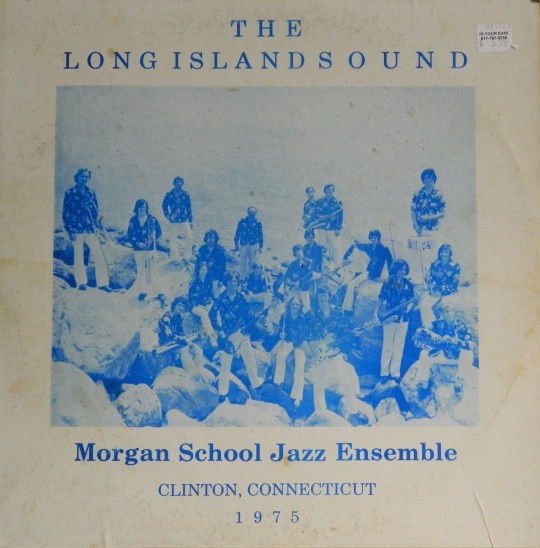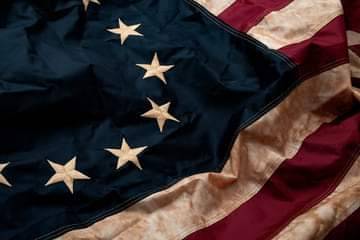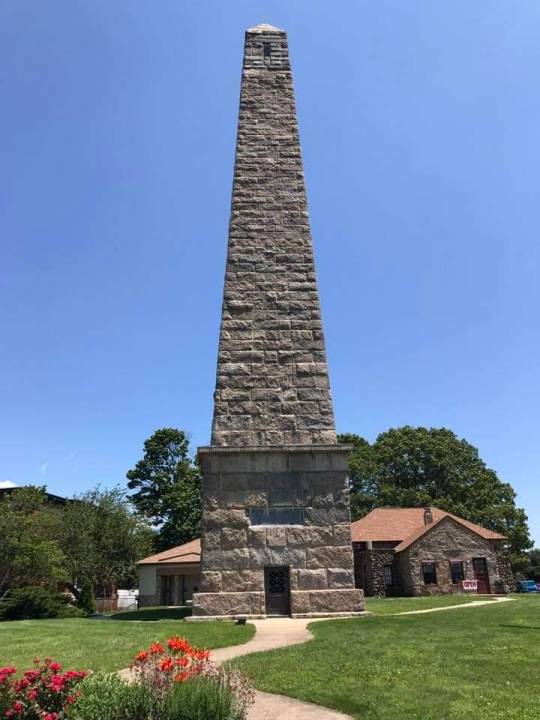#clinton connecticut
Explore tagged Tumblr posts
Text

◥(ºwº)◤
46 notes
·
View notes
Text


Morgan School Jazz Ensemble "The Long Island Sound"
#records#lp covers#lps#albums#record covers#album covers#lpcovers#vinyl#albumcovers#private press#high school jazz band#jazz#clinton connecticut#cow bell#in-your-ear-records#inyourear#iye
2 notes
·
View notes
Text
hello again (bill clinton limewire voice) my fellow americans
There are a few states that actually have Shield/Refuge laws designed to help trans people fleeing from trans-unsafe states, which also guarantee trans folks access to healthcare. These states are:
California
Colorado
Illinois
Oregon
Vermont
Washington
Minnesota
New Mexico
Maine
Massachusetts
Rhode Island
Connecticut
Washington D.C.
Additionally, some states have "trans sanctuary" executive orders signifying safety for trans folks seeking healthcare. These states are:
Maryland
New Jersey
New York
Living as a resident in these states means you are protected by state's rights and state government to continue or begin receiving trans healthcare. These laws have been codified in their states so everything has been a-ok'd by their state governments.
Stay alive. You got this. I love you.
50K notes
·
View notes
Text
🇺🇸 allow me to introduce myself 🐴

my name is coyote
i'm 19
from connecticut
currently into bill/hillary clinton but i also post about other presidents such as jfk and (god willing) kamala harris
i don't mind who follows me and i'm always happy to make new friends but this blog is hella NSFW so keep that in mind!
I'll post some horsie stuff from time to time just to keep this blog a little bit sane
i love to read (and OCCASSIONALLY write) fanfiction. please feel free to tag me in anything you write - i'd be happy to read and reblog it!
🐎🐎🐎🐎🐎🐎🐎🐎🐎🐎🐎🐎🐎🐎🐎🐎🐎🐎🐎🐎🐎🐎
#presidential fandom#hillary clinton#bill clinton#presidents#the clintons#billary#jfk#john f kennedy#jack kennedy#kamala harris#vote kamala
18 notes
·
View notes
Text


Who would like to live in a 1920 cottage on an island in Clinton, Connecticut? It has 3bds, 1ba, and is $449K. Located on Cedar Island, surrounded by Long Island Sound, Clinton Harbor, and the Hammonassett River, and only a 5-minute boat ride from Cedar Island Marina.



Enter a sunny living room with heat stove.


There's plenty room for a dining area.

The kitchen is located right by the living room.


This is very nice. Bigger than I expected.

Conveniently part of the main living space.

The bedrooms are small, but sunny. This one has doors to the patio.


The 2nd bd. is also cheery and is next to the 3rd bd. which is for children or guests.

Cute beadboard bathroom.

They've got it set up to sleep 4 - 8, and it has access to a sunroom.

The sunroom opens to the deck.

Handy sink is great for potting plants.

An outdoor shower for the summer.


There's a nice shed for garden stuff.


This is the life, pull up w/your boat and get something to eat at this restaurant.



Looks like there's a lot of good sea food places here.

This is so nice, and the house has solar panels, too. What a great place for under $500K.
97 notes
·
View notes
Text
ARE YOU SURE? - Episode 2 - New York and Connecticut, USA






BTS members Park Jimin and Jeon Jungkook - 2024
Cedar Island, Clinton — Connecticut, USA
11 notes
·
View notes
Text
US Presidential Election 1788-89
Okay, so we haven't done this before yet. The year is 1788. We're not really sure what this President thing is gonna be, but we're just coming out of a war and we delegated some responsibilities to this guy, so we need to figure out who it's gonna be.
(LOL it's definitely gonna be George Washington, no one is expecting otherwise... but let's do this voting thing for appearances' sake.)
Ahead of the election, please submit campaign ads for your chosen candidate here. Note: we absolutely allow - nay, embrace - smear campaigns and negative propaganda that may besmirch the reputations of these fine Americans.
Your candidates are:
George Washington (Independent, Virginia) John Adams (Federalist, Massachusetts) John Jay (Federalist, New York) Robert H. Harrison (Federalist, Maryland) John Rutledge (Federalist, South Carolina) John Hancock (Federalist, Massachusetts) George Clinton (Anti-Federalist, New York) Samuel Huntington (Federalist, Connecticut) John Milton (Federalist, Georgia) James Armstrong (Federalist, Georgia) Benjamin Lincoln (Federalist, Massachusetts) Edward Telfair (Federalist, Georgia)
Anyway, if you're being asked to vote, here's who you are:
If you live in Connecticut, Georgia, New Jersey, or South Carolina, you are a state legislator voting based on what you think is best for your new state.
If you live in Massachusetts, you are a state legislator, but eight of your ten electors have to be chosen based on what eligible voters in the House of Representatives wants.
If you live in Virginia, Delaware, Maryland, or Pennsylvania, you are a white man who meets the local property rights requirements.
If you live in New York, you are a state legislator but you're actually too busy clawing the eyes out of your fellow legislators to choose electors, so you're gonna sit this one out.
If you're in North Carolina or Rhode Island, you can get fucked until you finally ratify the constitution.
All in all, we expect about 1.8% of the population of America to vote. Democracy!
19 notes
·
View notes
Text
Every May — August 2023 RTC production that I know about !! (If you see any of these, please get a recording of some kind!)
Abingdon Community Theater, Bel Air, Maryland — May 6th — May 7th
Stone Soup Theatre, Durham, North Carolina — June 8th – 11th & June 23rd — 25th
Santa Barbara High school, Santa Barbara, California — June 1st — 4th
Tribble School For The Performing Arts, Houston, Texas — June 1st — 4th
Mini Mirage Theatre, Kendall, Florida — June 2nd — June 11th
Oddfellows Youth Theatre Playhouse, Middletown, Connecticut — June 16th — June 17th
Emporia State University, Emporia, Kansas — June 22nd — June 25th
Skiing Squirrel Productions, Clinton, New York — July 7th — July 8th
Forest Theater Guild, Carmel, California — June 16th — July 9th
Trinity Theatre Company, San Diego, California — July 21st — August 12th
Opera Wyoming, Casper, Wyoming — August 4th — 13th (with a preview on the 2nd)
Brown Cow Collective, Alberta, Canada — August 11th — 26th
#It isn't much of a list yet lmao but I wanted 2 get this out before April ended#ride the cyclone#rtc#tommy talks!!#again; please get a recording of some kind !! even if it's just an audio !!
71 notes
·
View notes
Text
New England Tamagotchi Club Schedules Connecticut Meetup

Calling all Tamagotchi fans in Connecticut! The New England Tamagotchi Club has scheduled a meetup for Sunday, January 12th, 2025 at 1:00PM! Located at Akiba Underground (5 Post Office Square) in Clinton, Connecticut. This store carries tons of movies, anime, licensed merchandise, and more!
#tamapalace#tamagotchi#tmgc#tamatag#virtualpet#bandai#meetup#newenglandtamagotchiclub#new england tamagotchi club#connecticut
4 notes
·
View notes
Text
Allison Janokwski at DNC:
5:30 PM
Call to Order Alex Hornbrook Executive Director of the 2024 Democratic National Convention Committee Gavel In The Honorable Cory Booker United States Senator, New Jersey Invocation Sri Rakesh Bhatt Sri Siva Vishnu Temple Bishop Leah D. Daughtry The House of the Lord Churches Pledge of Allegiance Students from Moreland Arts & Health Sciences Magnet School from St. Paul, MN National Anthem Jess Davis Presentation of Honorary Resolutions The Honorable Jaime Harrison Chairman of the Democratic National Committee Joined by Vice Chairs The Honorable Keisha Lance Bottoms, Ken Martin, Henry R. Muñoz III, Treasurer Virginia McGregor, and Finance Chair Chris Korge. Remarks Mini Timmaraju President and CEO of Reproductive Freedom for All Remarks Alexis McGill Johnson President and CEO of Planned Parenthood Action Fund Remarks Cecile Richards Reproductive Rights Champion Remarks Kelley Robinson President of the Human Rights Campaign Remarks Jessica Mackler President of EMILYs List Remarks María Teresa Kumar Founding President and CEO of Voto Latino Remarks The Honorable Tom Suozzi Member of the U.S. House of Representatives, New York
6:00 PM
Welcome Remarks The Honorable Cory Booker United States Senator, New Jersey Joint Remarks The Honorable Aftab Pureval Mayor of Cincinnati, Ohio The Honorable Cavalier Johnson Mayor of Milwaukee, Wisconsin Joint Remarks Rashawn Spivey and Deanna Branch Lead pipe removal advocates Remarks The Honorable Lisa Blunt Rochester Member of the U.S. House of Representatives, Delaware Remarks The Honorable Grace Meng Member of the U.S. House of Representatives, New York Remarks: “Project 2025—Chapter Three: Freedoms” The Honorable Jared Polis Governor of Colorado Remarks The Honorable Debbie Wasserman Schultz Member of the U.S. House of Representatives, Florida Remarks The Honorable Suzan DelBene Chair of the Democratic Congressional Campaign Committee Remarks The Honorable Keith Ellison Attorney General of Minnesota Remarks The Honorable Dana Nessel Attorney General of Michigan Joint Remarks Jon Polin and Rachel Goldberg Parents of Hersh Goldberg-Polin Performance Maren Morris American singer-songwriter
7:00 PM
Remarks The Honorable Veronica Escobar Member of the U.S. House of Representatives, Texas Remarks The Honorable Chris Murphy United States Senator, Connecticut Remarks The Honorable Javier Salazar Sheriff of Bexar County, Texas Remarks The Honorable Pete Aguilar Chair of the House Democratic Caucus Influencer Remarks Carlos Eduardo Espina Content creator Remarks Olivia Troye Former Trump administration national security official Remarks The Honorable Geoff Duncan Former Lieutenant Governor of Georgia Remarks The Honorable Bennie G. Thompson Member of the U.S. House of Representatives, Mississippi Remarks Sergeant Aquilino Gonell Retired United States Capitol Police Officer Remarks The Honorable Andy Kim Member of the U.S. House of Representatives, New Jersey Influencer Remarks Olivia Julianna Content creator Performance Stevie Wonder American singer-songwriter and musician Remarks Kenan Thompson and Guests on Project 2025 American comedian and actor
8:00 PM
Host Introduction Mindy Kaling Remarks The Honorable Hakeem Jeffries U.S. House of Representatives Democratic Leader Remarks The Honorable Bill Clinton 42nd President of the United States Remarks The Honorable Nancy Pelosi Speaker Emerita of the U.S. House of Representatives Remarks The Honorable Josh Shapiro Governor of Pennsylvania Remarks Alexander Hudlin Jasper Emhoff Arden Emhoff Remarks The Honorable Catherine Cortez Masto United States Senator, Nevada
9:00 PM
Performance Amanda Gorman National Youth Poet Laureate Remarks The Honorable Wes Moore Governor of Maryland Remarks The Honorable Pete Buttigieg Performance John Legend American singer-songwriter Sheila E. American singer and drummer Remarks The Honorable Amy Klobuchar United States Senator, Minnesota Remarks Benjamin C. Ingman Former student of Governor Walz Remarks The Honorable Tim Walz Governor of Minnesota Benediction William Emmanuel Hall Lead Pastor of St. James Church in Chicago
Apologies for the delay of night 3’s release of the DNC Speaker schedule.
The main speaker of tonight is Minnesota Governor and Kamala Harris VP pick Tim Walz.
Other notable Speakers: Bill Clinton, Oprah Winfrey, Amy Klobuchar, Cory Booker, Geoff Duncan, Andy Kim, Nancy Pelosi, Hakeem Jeffries, Josh Shapiro, and Pete Buttigieg.
Grace Meng and Debbie Wasserman Schultz were initially set to speak on Monday, but got moved to tonight.
Performers: Maren Morris, John Legend, Amanda Gorman (poem), Stevie Wonder
#2024 DNC#Tim Walz#Bill Clinton#Oprah Winfrey#Cory Booker#Geoff Duncan#Pete Buttigieg#Nancy Pelosi#Hakeem Jeffries#Josh Shapiro#Andy Kim#Grace Meng#Debbie Wasserman Schultz#Amy Klobuchar#Olivia Julianna#Bennie Thompson
3 notes
·
View notes
Note
'Of course I can see you.'
Thursday @ the muse of your choice. x)
@the-haunted-office
'beetlejuice' (1988) prompts. 🪲
Unlike the last time a breather noticed him, Beetlejuice keeps his reaction in check: he blows his nose viciously into his striped tie, then dabs it delicately underneath both eyes as if wiping away tears.
“Oh! Oh, you have no idea what those four little words mean to me!” Straightening his tie, he pulls his slacks out and peeks down. “Heh. Or do to me, apparently.” He looks up and lets go of his waistband, grave dirt brown eyes unnaturally bright in the fluorescent lights of the office building. Anyone who knew him would know the look on his face is as dangerous as it is conniving. Lucky for him—NEEEEEEEW BREATHER! All he needs now is a good in, and not only would he be back—oh nooo, he would also be the FUCK out of Connecticut!
(Seriously, fuck Connecticut.)
“Babes, you can see me—but can you read?” Okay, it’s a fucking awful Plan A, but it’s worth a shot! Beetlejuice latches onto the breather’s wrist and pulls her hand forward, delivering from his striped pocket everything his grubby hand touches on the way to what he’s looking for. “Mood ring, cockroach, pocket lint—hey, don’t lose that, I’m saving it for later—knuckle bone, Bill Clinton’s cockring—card!” Beetlejuice slaps the card triumphantly down on the top of the pile, looking pleased with himself.
Betelgeuse, Betelgeuse, Betelgeuse - a name so nice you’ve gotta say it thrice!
“So, babes: wow me! Cannnnnn. Women. Read?” He announces it like the name of a game show and waits with bated breath to see if the breather will take the bait.
Oh please oh please oh pleasepleasepleaseplease….
#thehauntedoffice#thursday (tho)#ghost with the most#plz do not say it 3x#it’s so much funnier when he’s frustrated
7 notes
·
View notes
Text
Holidays 8.30
Holidays
Archivist Day (Kyrgyzstan)
AVID Day
Barberry Day (French Republic)
Commemoration Day for the Fatalities in Pre-Deportation Detention (Germany)
Frankenstein Day
Fred Hampton Day (Illinois)
Freeman-Moss Day
Huey P. Long Day (Louisiana)
International Day of the Disappeared
International Day of the Victims of Enforced Disappearances (UN)
International Missy Barratt Day (Aenopia)
International Puma Day
International Whale Shark Day
Jimmy Buffet Day
Manu Ginobili Day (Texas)
Marcelo H. Del Pilar Day (Bulacan, Philippines)
Motel Day (Colombia)
National Ass Clapping Day
National Beach Day
National Bite People Who Annoy You Day
National Black Beauty Founders Day
National Grief Awareness Day
National Harper Day
National Holistic Pet Day
National Homecare Day of Action
National Press Freedom Day (Philippines)
National Screen Time Awareness Day
National Small Industry Day (India)
Pinaglabanan Day (Philippines)
Retrospection Day
Rowboat Day
Saint Rose of Lima’s Day (Peru)
Slinky Day
Talk Intelligently Day
Victory Day (Turkey)
Food & Drink Celebrations
International Cabernet Sauvignon Day
National Mai Tai Day (a.k.a. Real Mai Tai)
National Toasted Marshmallow Day
New England Apple Day
Independence & Related Days
Ashoka (Declared; 2010) [unrecognized]
Constitution Day (Kazakhstan)
Constitution Day (Turks and Caicos Islands)
Kohlandia (Declared; 2019) [unrecognized]
Leylandiistan & Gurvata (Declared; 2014) [unrecognized]
Liberation Day (Hong Kong; from Japanese Occupation; 1945)
National Liberation Day (Gabon; 2023)
Tatarstan (from Russia, 1990) [unrecognized]
5th & Last Friday in August
Burning of Zozobra (Old Man Gloom effigy) [Friday before 9.1]
College Colors Day [Friday nearest 9.1]
Comfort Food Friday [Every Friday]
Daffodil Day (New Zealand) [Last Friday]
Five For Friday [Every Friday]
Flashback Friday [Every Friday]
Forgive Your Foe Friday [Friday of Be Kind to Humankind Week]
Friday Finds [Every Friday]
Fry Day (Pastafarian; Fritism) [Every Friday]
Peruvian Coffee Day (Peru) [Last Friday]
Positive Twitter Day [Last Friday]
TGIF (Thank God It's Friday) [Every Friday]
Tracky Dack Day (Australia) [Last Friday]
Wear It Purple Day (Australia) [Last Friday]
Sheep Market Fair begins (Denmark) [Last Friday through Sunday]
Weekly Holidays beginning August 31 (4th Full Week of August)
Labor Day Weekend (U.S. & Canada) [Begins Friday before 1st Monday in September]
Benton Neighbor Day (Benton, Missouri)
Britt Draft Horse Show (Britt, Iowa)
Bumbershoot (Seattle, Washington)
Central City Rock 'n' Roll Cruise-in & Concert (Central City, Kentucky)
Cleveland National Air Show (Cleveland, Ohio)
Clothesline Fair (Prairie Grove, Arkansas)
Colombia River Cross Channel Swim (Hood River, Oregon)
Colorado Balloon Classic (Colorado Springs, Colorado)
Commonwheel Labor Day Weekend Arts and Crafts Festival (Manitou Springs, Colorado)
Daniel Boone Pioneer Days (Winchester, Kentucky)
Fort Bridger Rendezvous (Fort Bridger, Wyoming)
Great Bathtub Race (Nome, Alaska)
Great Grove Bed Race (Coconut Grove, Florida)
Harvest Wine Celebration (Livermore, California)
Hog Capital of the World Festival (Kewanee, Illinois)
Hopkinton State Fair (Contoocook, New Hampshire)
Iroquois Arts Festival (Howes Cave, New York)
Johnson City Field Days (Johnson City, New York)
Jubilee Days Festival (Zion, Illinois)
Lifelight Outdoor Music Festival (Worthing, South Dakota)
Mackinac Bridge Walk (St. Ignace, Michigan)
National Championship Chuckwagon Races (Clinton, Arkansas)
National Hard Crab Derby and Fair (Crisfield, Maryland)
National Sweetcorn Festival (Hoopeston, Illinois)
Oatmeal Festival (Bertram/Oatmeal, Texas)
Odyssey Greek Festival (Orange, Connecticut)
On the Waterfront (Rockford, Illinois)
Old Threshers Reunion (Mount Pleasant, Iowa)
Oregon Trail Rodeo (Hastings, Nebraska)
Payson Golden Onion Days (Payson, Utah)
Pennsylvania Arts & Crafts Colonial Festival (Greensburg, Pennsylvania)
Popeye Picnic (Chester, Illinois)
Santa-Cali-Gon Days Festival (Independence, Missouri)
Scandinavian Fest (Budd Lake, New Jersey)
Sta-Bil Nationals Championship Lawn Mower Race (Delaware, Ohio)
Snake River Duck Race (Nome, Alaska)
Taste of Colorado (Denver, Colorado)
Taste of Madison (Madison, Wisconsin)
Totah Festival (Farmington, New Mexico)
Waikiki Roughwater Swim (Honolulu, Hawaii)
Westfest Czech Heritage Festival (West, Texas)
West Virginia Italian Heritage Festival (Clarksburg, West Virginia)
Wisconsin State Cow-Chip Throw (Prairie du Sac, Wisconsin)
Woodstock Fair (Woodstock, Connecticut)
World Championship Barbecue Goat Cook-Off (Brady, Texas)
Festivals Beginning August 30, 2024
Battle of Flowers (Laredo, Spain) [thru 8.30]
Brisbane Festival (Brisbane, Australia) [thru 9.21]
California Garlic Festival (Los Banos, California) [thru 9.1]
Calumet County Fair (Chilton, Wisconsin) [thru 9.2]
Casey Popcorn Festival (Casey, Illinois) [thru 9.2]
Coconino County Fair (Fort Tuthill County Park, Arizona) [thru 9.2]
Dice Con (Lviv, Ukraine) [thru 9.1]
Eastern Idaho State Fair (Blackfoot, Idaho) [thru 9.7]
European Medieval Festival (Horsens, Denmark) [thru 8.31]
Fall Fest 2024 (Schweitzer Mountain Resort, Idaho) [thru 9.2]
Galveston Island Wine Festival (Galveston, Texas) [thru 9.1]
Giant Cabbage Weigh-Off (Palmer, Alaska)
Great Pershing Balloon Derby (Brookfield, Missouri) [thru 9.2]
Harmony Fair (Harmony, Maine) [thru 9.2]
Marshall County Blueberry Festival (Plymouth, Indiana) [thru 9.2]
Michigan Bean Festival (Fairgrove, Michigan) [thru 8.31]
Midway Swiss Days (Midway, Utah)
National Hard Crab Derby (Crisfield, Maryland) [thru 9.1]
Nauvoo Grape Festival (Nauvoo, Illinois) [thru 9.1]
North Carolina Apple Festival (Hendersonville, North Carolina) [thru 9.2]
Obetz Zucchinifest (Obetz, Ohio) [thru 9.2]
Oktoberfest (Beaver Creek, Colorado) [thru 9.1]
PAX West, a.k.a. PAX Prime (Seattle, Washington) [thru 9.2]
Payson City Golden Onion Days (Payson, Utah) [thru 9.2]
Red Rooster Days (Dassel, Minnesota) [thru 9.2]
St. William Seafood Festival (Guntersville, Alabama) [thru 8.31]
Washington State Fair (Puyallup, Washington) [thru 9.22]
Wilhelm Tell Festival (New Glarus, Wisconsin) [thru 9.1]
Wisconsin State Cow Chip Throw & Festival (Prairie du Sac, Wisconsin) [thru 8.31]
Woodstock Fair (Woodstock, Connecticut) [thru 9.2]
Feast Days
Agilus (a.k.a. Aile; Christian; Saint)
Alexander of Constantinople (Eastern Orthodox)
Alfredo Ildefonso Schuster (Christian; Blessed)
Anne Line, Margaret Ward & Margaret Clitherow (Christian; Saints)
Black (Positivist; Saint)
Camilla Läckberg (Writerism)
Candle in a Wine Bottle Day (Pastafarian)
Charisteria (Charis, Goddess of Mercy; Old Roman Thanksgiving)
Chatter Champion Announcement Day (Shamanism)
Day of Satisfying the Hearts of the Ennead (Nine Major Gods; Ancient Egypt)
Eustáquio van Lieshout (Christian; Blessed)
Evelyn De Morgan (Artology)
Charles Chapman Grafton (Episcopal Church)
Fantinus (Christian; Saint)
Felix and Adauctus (Christian; Martyrs)
Festival of Charisteria (Day to Give Thanks; Ancient Rome)
Fiacre (Christian; Saint)
Guy de Lussigny (Artology)
Habetrot’s Eve Day (Northern Britain; Starza Pagan Book of Days)
Isaac Levitan (Artology)
Jacques Louis David (Artology)
J. Alden Weir (Artology)
Jeanne Jugan (Christian; Saint)
Leonor Fini (Artology)
Mary Shelley (Writerism)
Narcisa de Jesús (Christian; Saint)
Pammachius (Christian; Saint)
The Pullover Sweater (Muppetism)
Robert Crumb (Artology)
Rose of Lima (Christian; Saint)
Rumon (a.k.a. Ruan; Christian; Saint)
Sacrifice to Tari Pennu Day (Indian Earth-Goddess; Everyday Wicca)
Santa Rosa de Lima Day (Peru)
Stephen Nehmé (Maronite Church, Catholic Church; Blessed)
Theo van Doesburg (Artology)
Third Onam (Rice Harvest Festival, Day 3; Kerala, India)
Thor Day (Church of the SubGenius; Saint)
The Three Arts Day (Celtic Book of Days)
Virginia Lee Burton (Artology)
Lucky & Unlucky Days
Dismal Day (Unlucky or Evil Day; Medieval Europe; 16 of 24)
Egyptian Day (Unlucky Day; Middle Ages Europe) [16 of 24]
Sakimake (先負 Japan) [Bad luck in the morning, good luck in the afternoon.]
Unlucky Day (Grafton’s Manual of 1565) [39 of 60]
Premieres
Alice Chops the Suey (Ub Iwerks Disney Cartoon; 1925)
Anna Karenina (Film; 1935)
Bad Girl, by The Miracles (Song; 1959)
Beer (Film; 1985)
The Big Snooze (Chilly Willy Cartoon; 1957)
A Bird in a Guilty Cage (WB LT Cartoon; 1952)
Carnival Row (TV Series; 2019)
Dance, Girl, Dance (Film; 1940)
The Dark Crystal: Age of Resistance (TV Series; 2019)
Emma (Film; 1996)
Flesh + Blood (Film; 1985)
The Funny World of Fred and Barney (Live Action/Animated TV Variety Show; 1978)
The Good Girl (Film; 2002)
Heart-Shaped Box, by Nirvana (Song; 1993)
Hey Jude, by The Beatles (Song; 1968) [1st Apple Records release]
Highway 61 Revisited, by Bob Dylan (Album; 1965)
Kravn the Hunter (Film; 2023)
The Late Show with David Letterman (Talk Show; 1993)
Little Cesario (MGM Cartoon; 1941)
Medúlla, by Björk (Album; 2004)
A Mouse in the House (Tom & Jerry Cartoon; 1947)
Music of the Sun, by Rihanna (Album; 2005)
Never Kick a Woman (Fleischer Popeye Cartoon; 1936)
Otello (Opera Film by Franco Zeffirelli; 1986)
Putting on the Act (Fleischer Popeye Cartoon; 1940)
Santana, by Carlos Santana (Album; 1969)
The School for Scandal, by Samuel Barber (Overture; 1933)
Short in the Saddle (Woody Woodpecker Cartoon; 1963)
Side to Side, by Ariana Grande (Song; 2016)
Slow Days, Fast Company, by Eve Babitz (Short Stories; 1977)
State Fair (Film; 1945)
Surf’s Up, by The Beach Boys (Song; 1971)
Terror on the Midway (Fleischer Cartoon; 1942) [#9]
The Three Bears (Ub Iwerks ComiColor Cartoon; 1935)
Top Hat (Film; 1935)
What Happened to Monday (Film; 2017)
Today’s Name Days
Felix, Herbert, Rebekka (Austria)
Aleksandar, Aleksandra (Bulgaria)
Didak, Margarita, Petar (Croatia)
Vladěna (Czech Republic)
Albert, Benjamin (Denmark)
Emil, Meljo, Mello, Miljo (Estonia)
Eemeli, Eemi, Eemil (Finland)
Fiacre (France)
Alma, Felix, Heribert, Rebekka (Germany)
Alexandra, Alexandros, Evlalios, Filakas (Greece)
Rózsa (Hungary)
Donato, Fantino (Italy)
Alija, Alvis, Jolanta (Latvia)
Adauktas, Augūna, Gaudencija, Kintenis (Lithuania)
Ben, Benjamin (Norway)
Adaukt, Częstowoj, Gaudencja, Miron, Rebeka, Róża, Szczęsna, Szczęsny, Tekla (Poland)
Ružena (Slovakia)
Íngrid, Pedro (Spain)
Albert, Albertina (Sweden)
Raisa, Rhoda, Rosa, Rosabelle, Rosalie, Rosalind, Rosalinda, Roseanne, Rose, Rosemary, Rosetta, Rosie (USA)
Today is Also…
Day of Year: Day 243 of 2024; 123 days remaining in the year
ISO: Day 5 of Week 35 of 2024
Celtic Tree Calendar: Coll (Hazel) [Day 28 of 28]
Chinese: Month 7 (Ren-Shen), Day 27 (Bing-Yin)
Chinese Year of the: Dragon 4722 (until January 29, 2025) [Wu-Chen]
Hebrew: 26 Av 5784
Islamic: 24 Safar 1446
J Cal: 3 Gold; Threesday [3 of 30]
Julian: 17 August 2024
Moon: 11%: Waning Crescent
Positivist: 19 Gutenberg (9th Month) [Fulton]
Runic Half Month: Rad (Motion) [Day 8 of 15]
Season: Summer (Day 72 of 94)
Week: 4th Full Week of August
Zodiac: Virgo (Day 9 of 32)
2 notes
·
View notes
Text


REMEMBER FORT GRISWOLD!!
This was a rallying cry during the Battle of Yorktown, the final struggle of the American Revolution. What is Fort Griswold? What horrors happened on September 6th, 1781 to earn the respect of the troops? It is also personal to my family, as my wife has a direct ancestral family connection to this conflict.
Let's examine the events leading up to the Battle of Fort Griswold, also known as the Battle of Groton Heights. After turning coat, Benedict Arnold received a commission as a brigadier general in the British army as part of the deal that he made in order to betray his country.
In August 1781, George Washington decided to shift forces in order to attack the army of Lt. Gen. Lord Charles Cornwallis in Virginia. Washington began pulling troops from the New York area. Lt. Gen. Sir Henry Clinton, the British commander-in-chief in America, realized on September 2 that Washington’s tactics had deceived him, leaving him unable to mobilize quickly enough to help Cornwallis. Further, there was still a significant force of Continentals facing him in front of New York, and Clinton did not feel that he could detach troops to reinforce Cornwallis as a result.
Instead, Clinton decided to launch a raid into Connecticut in the hope of forcing Washington to respond. Clinton intended that this be a raid, but he also recognized that New London on the Thames River could be used as a permanent base of operations into the interior of New England. Clinton appointed Arnold to command the raid because he was from Connecticut and knew the terrain.
Arnold commanded about 1,700 British solders, divided into two battalions. Lt. Col. Edmund Eyre commanded a battalion consisting of the 40th and 54th Regiments of Foot and Cortland Skinner’s New Jersey Volunteers, a Loyalist unit. Arnold himself commanded the other battalion, made up of the 38th Regiment of Foot and various Loyalist units, including the Loyal American Regiment and Arnold’s American Legion. Arnold also had about 100 Hessian Jägers, and three six-pound guns. This was a formidable force anchored by the three Regular regiments.
Arnold and his command sailed from New York City on September 4. The British fleet anchored about 30 miles west of New London to make its final preparations, and then sailed for New London late on September 5, hoping to make a nighttime landing. Fortunately for the defenders of New London, the winds did not favor Arnold’s plan, and the British force did not arrive until daylight on September 6.
Rufus Avery, a Continental officer stationed at Fort Griswold, on the opposite side of the Thames River, and positioned on commanding high ground, witnessed the arrival of the British:
“… about three o’clock in the morning, as soon as I had daylight so as to see the fleet, it appeared a short distance below the lighthouse. The fleet consisted of thirty-two vessels…. I immediately sent word to Captain William Latham, who commanded [Fort Griswold], and who was not far distant. He very soon came to the fort, and saw the enemy’s fleet, and immediately sent a notice to Col. William Ledyard, who was commander of the harbor, Fort Griswold, and Fort Trumbull.”
43-year-old Lt. Col. William Ledyard commanded Forts Griswold and Trumbull. Ledyard, a Connecticut militia officer, quickly sent a messenger to notify Gov. Jonathan Trumbull and to muster troops. He then went to Fort Griswold to assume command of its defenses. The fort’s guns fired twice to signal the enemy approach, and a British ship answered with a third shot, changing the meaning of the signal to suggest the arrival of a victorious friend, thereby confusing the local militia commanders and delaying the mustering and deployment of their troops.
Fort Griswold began being constructed in late 1775 in response to the outbreak of hostilities. It was completed in 1778, and was known as “Groton Fort.” It sits atop a high hill and could bombard any ship attempting to enter the Thames River or the town of New London. Approximately 165 Connecticut militiamen manned its defenses, organized into two companies, and a detachment of the 8th Regiment of Connecticut Militia. Ledyard and his soldiers faced a stern task—they were badly outnumbered by veteran British troops including Regulars of some of the best regiments in Clinton’s army.
A British officer described Fort Griswold’s defenses:
“The fort was an oblong square, with bastions at opposite angles, its longest side fronting the river in a north-west and southeast direction. Its walls were of stone,and were ten or twelve feet high on the lower side, and surrounded by a ditch. On the wall were pickets, projecting over twelve feet; above this was a parapet with embrasures, and within a platform for cannon, and a step to mount upon, to shoot over the parapet with small arms. In the south-west bastion was a flag-staff, and in the side near the opposite angle, was the gate, in front of which was a triangular
breast-work to protect the gate; and to the right of this was a redoubt, with a three-pounder in it, which was about 120 yards from the gate. Between the fort and the river was another battery, with a covered way, but which could not be used in this attack, as the enemy appeared in a different quarter today.”
Six-pound cannons bristled from the western side of the fort, overlooking the Thames. The northern side by the main entrance was level and played a major role in the coming battle.
At sunrise on September 6, British troops landed on both sides of the mouth of the Thames River. Arnold’s battalion of 800 men occupied New London with no resistance. The 23 soldiers manning Fort Trumbull on the New London side of the river fired a single volley, spiked their guns, and then fled across the river to Fort Griswold. Shapley lost 7 men wounded while Arnold’s troops sustained four or five casualties. After chasing off the defenders of Fort Trumbull, Arnold’s troops entered the town and began destroying supplies and naval stores. Parts of the town were spared, but when a storehouse that contained a large supply of gunpowder was set ablaze, the resulting explosion triggered a huge fire that consumed 143 buildings in New London.
Lt. Col. Edmund Eyre’s battalion of 800 Regulars and Loyalists landed on the east bank of the Thames River, facing tangled woodlands and swamps. The New Jersey Loyalists, in fact, had so much difficulty moving the artillery that they did not participate in the assault on Fort Griswold.
Eyre sent a Captain Beckwith to the fort under a flag of truce to demand its surrender. Ledyard called a council of war and consulted with his officers. The Americans believed that a large force of militiamen would answer the call, and that this augmented force could defend the fort. Ledyard responded by sending an American flag to meet the British flag bearer. The American told Beckwith, “Colonel Ledyard will maintain the fort to its last extremity.” Displeased by the response, Eyre sent a second flag, threatening no quarter if the militia did not surrender. Ledyard gave the same response even though some of the Americans suggested that they should leave the fort and fight outside instead.
Arnold ordered Eyre to assault the fort, assuming that it would be taken easily. Once he reached a hill that allowed him to see the entire fort, Arnold realized that the stout fort would not fall easily. Arnold tried to recall Eyre, but it was too late. The British assault was about to begin in earnest.
Eyre split his force. Some moved to the southern side of the fort while others went around the east side to the northern face. A diversionary force feinted toward the western side. Naval captain Elias Halsey, an experienced artillerist, manned the main cannon on the eastern face of the front as Eyre’s troops approached Ledyard ordered his men to hold their fire until the first British detachment arrived at a point that gave his men the best opportunity to kill as many as possible. As the British moved to assault the fort, Halsey pulled the lanyard on his 18-pounder loaded with grapeshot. Twenty British solders fell to the ground, either dead or suffering from ghastly wounds from being torn apart by the grapeshot. Halsey’s well-aimed shot tore a gaping hole in the British line, but the well-disciplined Regulars closed ranks and filled that gap, continuing their advance.
Sgt. Stephen Hempstead of Ledyard’s command recounted, “When the answer to their demand had been returned … the enemy were soon in motion, and marched with great rapidity, in a solid column … they rushed furiously and simultaneously to the assault of the southwest bastion and the opposite sides.”
The large force of British soldiers moved on the southwest bastion under heavy fire from the fort’s defenders. The British officers goaded their men on toward the ramparts of the fort, even though their men were suffering heavily at the hands of the defenders. Colonel Eyre fell mortally wounded, and was carried from the field.
Maj. William Montgomery of the 40th Regiment of Foot was now the senior British officer. He led his men forward in solid column formation, and advanced on the east side of the fort. Montgomery ordered an attack on the eastern redoubt. Ledyard’s Nutmeg State men stoutly resisted, inflicting heavy losses on the British attackers. The Regulars attempted to scale the 12-foot high ramparts, but were cut down. As the men of the 40th Regiment poured over the top of the walls, defender Jordan Freeman, an African-American free man formerly owned by Colonel Ledyard, killed Montgomery with a long pike. The enraged Regulars then killed Freeman to avenge the death of their commander.
The concentrated fire of the British Regulars cut the fort’s main flag from its stand, which the British soldiers construed as the flag being struck in surrendering the fort. Thinking they had won the day, the rushed the main gate of the fort, only to receive a thunderous volley of shot and shell. The enraged Regulars tried to open the fort’s main gates to allow the rest of their comrades to enter, but a sheet of musket fire cut many of them down—supposedly, the first man to try to open the gate was killed instantly by a musket ball to the brain. Some of the British troops forced the gate open, and the Regulars poured into the fort.
Despite losing their two highest-ranking officers in the assault on the fort, the British carried the day. However, their successful assault now set the stage for the tragedy that followed.
With British soldiers pouring into the fort, Colonel Ledyard ordered a ceasefire and prepared to surrender Fort Griswold to the victorious British. However, the British disregarded the ceasefire and continued pouring fire into the American garrison, killing or wounding nearly all of the fort’s defenders. “I believe there was not less than five or six hundred men of the enemy on the parade in the fort,” claimed American soldier Rufus Avery. “They killed and wounded nearly every man in the fort as quick as they could.”
Maj. Stephen Bromfield, the ranking British officer after Montgomery fell, called out, “Who commands this fort?” Ledyard stepped forward and responded, “I did, sir, but you do now.” Another American, Jonathan Rathbun, watched Bromfield run Ledyard through the heart and lungs with Ledyard’s own sword:
“…the wretch who murdered him [Ledyard], exclaimed, as he came near, “Who commands this fort?” Ledyard handsomely replied, “I did, but you do now,” at the same moment handing him his sword, which the unfeeling villain buried in his breast! Oh, the
hellish spite and madness of a man that will murder a reasonable and noble-hearted officer, in the act of submitting and surrendering!”
Another African-American soldier, Lambo Latham, avenged Ledyard’s death by killing the British officer responsible for Ledyard’s death.
Ledyard fell, and those nearest to him tried to support the dying colonel. Capt. Peter Richards, seriously wounded, but still on his feet, held Ledyard while others moved forward to try to avenge their fallen commander. The British cut them all down with their bayonets, with some receiving as many as 30 stab wounds.
In the meantime, on the southwest side of the fort, some of the Regulars turned one of the fort’s cannons on its defenders and opened fire, killing Capt. Adam Sharpley and another officer.
“Never was a scene of more brutal wanton carnage witnessed than now took place,” recalled American Stephen Hempstead. “The enemy were still firing upon us… [until] they discovered they were in danger of being blown up.” Rufus Avery believed that the attack was called off due to the chance that further musket fire might set off the fort’s powder magazine.” Hempstead noted, “After the massacre, they plundered us of everything we had, and left us literally naked.”
Horrified by the carnage around him, a British officer demanded that the butchery end. “Stop! Stop!” yelled the officer. “In the name of heaven I say stop! My soul cannot bear it!” The officers soon regained control of their men, and the slaughter soon ended.
The best explanation for the massacre of the fort’s defenders by the British was an angry reaction to the casualties taken by them after the fort’s colors were shot down, leading the British to believe that the fort had surrendered. Furious at the continued resistance after the supposed surrender, the British punished the American defenders in an atrocity.
They killed and wounded every man they possibly could… one mad looking fellow put his bayonet to my side, swearing “by Jesus he would skipper me!” I looked him earnestly in the face and eyes, and begged him to have mercy… he put his bayonet three times into me… I think no scene ever exceeded this for continued and barbarous massacre after surrender. (Rufus Avery’s account of the storming of Fort Griswold by British regulars, September 6th 1781).
American casualties were appalling: 85 killed, 35 wounded and paroled, 28 taken prisoner, 13 escaped, 1 captured and released (12 year old William Latham, Jr.). Total: 162. British losses numbered 48 killed and 145 wounded.
An American named F. M. Calkins reported that American dead were loaded into a cart and were carried away from the fort:
“About twenty soldiers wee then employed to drag this wagon down the hill, to a safe distance from the expected explosion. From the brow of the ridge on which the fort stood, to the brink of the river, was a rapid descent of one hundred rods, uninterrupted
except by the roughens of the surface, and by scattered rocks, brushes, and stumps of
trees. The weight of the wagon after it had begun to move, pressing heavily upon the soldiers, they let go their hold, and darting aside, left it to its own impetus. On it went, with accelerated velocity, surmounting every impediment, till near the foot of the hill,
when it came against the trunk of a large apple-tree, with a force that caused it to recoil and sway round. This arrested its course, but gave a sudden access of torture to the sufferers. The violence of the shock is said to have caused instant death to some of them;
others fainted, and two or three were thrown out to the ground. The enemy, after a time, gathered up the bleeding men, and carried them into a house near by, belonging to Ensign Avery, who was himself one of the party in the wagon. The house had been previously set on fire, but they extinguished the flames, and left the wounded men there on parole, taking as hostage for them, Ebenezer Ledyard, brother of the commander of the fort.”
The British lit a trail of gunpowder that they hoped would destroy Fort Griswold’s magazine, but a daring militiaman entered the fort and extinguished the fire, leaving the fort intact. The British then loaded their prisoners onto their ships and withdrew, leaving chaos in their aftermath.
This was the final major battle in the northern theater of the American Revolution. General Clinton praised Arnold’s “spirited conduct”, but also complained about the high casualty rate suffered by Arnold’s forces—about a quarter of the troops sent to attack Fort Griswold became casualties. A British observer likened the fight for Fort Griswold to the debacle at Bunker Hill. Many British soldiers blamed Arnold for the losses at Fort Griswold, even though he was not present on the battlefield. Arnold next proposed a raid on Philadelphia, but Cornwallis’ surrender at Yorktown the next month ended the active fighting of the American Revolution.
Today, Fort Griswold is a Connecticut state park. The fort’s earthen works are well maintained. There are monuments to both Montgomery and Ledyard within the boundaries of the fort. The site of the former barracks located in the fort is marked. Large gates bear the names of all of the American defenders who fell defending Fort Griswold. The Groton Monument, erected in 1830, towers 130 feet over the battlefield in commemoration of the fort’s gallant defenders, and a plaque affixed to the monument provides:
THIS MONUMENT WAS ERECTED UNDER THE PATRONAGE OF THE STATE OF CONNECTICUT, A.D. 1830, AND IN THE 55TH YEAR OF THE INDEPENDENCE OF THE U.S.A. IN MEMORY OF THE BRAVE PATRIOTS, WHO FELL IN THE MASSACRE AT FORT GRISWOLD, NEAR THIS SPOT, ON THE 6TH OF SEPT. A.D. 1781, WHEN THE BRITISH, UNDER THE COMMAND OF THE TRAITOR, BENEDICT ARNOLD, BURNT THE TOWNS OF NEW LONDON AND GROTON, AND SPREAD DESOLATION AND WOE THROUGHOUT THIS REGION.
There is a small museum nearby that includes artifacts and a detailed diorama and model of the British assault on Fort Griswold. It is well worth the visit. One can also hike up the spiral staircase of the 130 foot obelisk to view the fort and battlefield through the small windows at its pinnacle. (I did this in the hot and humid summer and was very thankful to be back on the ground).
The Battle of Groton Heights is largely overlooked and forgotten today but was nevertheless an important battle, representing the final significant combat in the northern theater of the Revolutionary War. It also represents the only battle where Benedict Arnold faced his fellow countrymen.
The militia were farmers and fishermen that left their homes to defend their new country to become patriots. I was honored and humbled to visit this historical site in 2016. It is a great reminder of the ultimate sacrifices made to attain our freedoms.
REMEMBER FORT GRISWOLD!!
19 notes
·
View notes
Text
The fix is in. To “protect democracy,” democracy is already being canceled. We just haven’t admitted the implications of this to ourselves yet.
On Sunday, January 14th, NBC News ran an eye-catching story: “Fears grow that Trump will use the military in ‘dictatorial ways’ if he returns to the White House.” It described “a loose-knit network of public interest groups and lawmakers” that is “quietly” making plans to “foil any efforts to expand presidential power” on the part of Donald Trump.
The piece quoted an array of former high-ranking officials, all insisting Trump will misuse the Department of Defense to execute civilian political aims. Since Joe Biden’s team “leaked” a strategy memo in late December listing “Trump is an existential threat to democracy” as Campaign 2024’s central talking point, surrogates have worked overtime to insert existential or democracy in quotes. This was no different:
“We’re about 30 seconds away from the Armageddon clock when it comes to democracy,” said Bill Clinton’s Secretary of Defense, William Cohen, adding that Trump is “a clear and present danger to our democracy.” Skye Perryman of Democracy Forward, one of the advocacy groups organizing the “loose” coalition, said, “We believe this is an existential moment for American democracy.” Declared former CIA and defense chief Leon Panetta: “Like any good dictator, he’s going to try to use the military to basically perform his will.”
Former Acting Assistant Attorney General for National Security at the U.S. Department of Justice and current visiting Georgetown law professor Mary McCord was one of the few coalition participants quoted by name. She said:
We’re already starting to put together a team to think through the most damaging types of things that he [Trump] might do so that we’re ready to bring lawsuits if we have to.
The group was formed by at least two organizations that have been hyperactive in filing lawsuits against Trump and Trump-related figures over the years: the aforementioned Democracy Forward, chaired by former Perkins Coie and Hillary Clinton campaign attorney Marc Elias, and Protect Democracy, a ubiquitous non-profit run by a phalanx of former Obama administration lawyers like Ian Bassin, and funded at least in part by LinkedIn magnate Reid Hoffman.
The article implied a future Trump presidency will necessitate new forms of external control over the military. It cited Connecticut Senator Richard Blumenthal’s bill to “clarify” the Insurrection Act, a 1792 law that empowers the president to deploy the military to quell domestic rebellion. Blumenthal’s act would add a requirement that Congress or courts ratify presidential decisions to deploy the military at home, seeking essentially to attach a congressional breathalyzer to the presidential steering wheel.
NBC’s quotes from former high-ranking defense and intelligence officials about possible preemptive mutiny were interesting on their own. However, the really striking twist was that we’d read the story before.

For over a year, the Biden administration and its surrogates have dropped hint after hint that the plan for winning in 2024 — against Donald Trump or anyone else — might involve something other than voting. Lawsuits in multiple states have been filed to remove Trump from the ballot; primaries have been canceled or invalidated; an ominous Washington Post editorial by Robert Kagan, husband to senior State official Victoria Nuland, read like an APB to assassins to head off an “inevitable” Trump dictatorship; and on January 11th of this year, leaders of a third party group called “No Labels” sent an amazing letter to the Department of Justice, complaining of a “conspiracy” to stop alternative votes.
Authored by former NAACP director Ben Chavis, former Connecticut Senator Joe Lieberman, former Director of National Intelligence Dennis Blair, former North Carolina Governor Pat McCrory, and former Assistant U.S. Attorney and Iran-Contra Special Counsel Dan Webb, the No Labels letter described a meeting of multiple advocacy groups aligned with the Democratic party. In the 80-minute confab, audio of which was obtained by Semafor, a dire warning was issued to anyone considering a third-party run:
Through every channel we have, to their donors, their friends, the press, everyone — everyone — should send the message: If you have one fingernail clipping of a skeleton in your closet, we will find it… If you think you were vetted when you ran for governor, you’re insane. That was nothing. We are going to come at you with every gun we can possibly find. We did not do that with Jill Stein or Gary Johnson, we should have, and we will not make that mistake again.
The Semafor piece offered a rare glimpse into the Zoom-politics culture that’s dominated Washington since the arrival of Covid-19. If this is how Beltway insiders talk about how to keep Joe Lieberman or Ben Chavis out of politics, imagine what they say about Trump?
We don’t have to imagine. Three and a half years ago, in June and July of 2020, an almost exactly similar series of features to the recent NBC story began appearing in media, describing another “loose network” of “bipartisan officials,” also meeting “quietly” to war-game scenarios in case “Trump loses and insists he won,” as the Washington Post put it.
That group, which called itself the Transition Integrity Project (TIP), involved roughly 100 former officials, think-tankers, and journalists who gathered to “wargame” contested election scenarios. The “loose” network included big names like former Michigan governor and current Energy Secretary Jennifer Granholm, and former Hillary Clinton campaign chief John Podesta, who in his current role as special advisor to President Joe Biden overseeing the handout of roughly $370 billion in “clean energy” investments is one of the most powerful people in Washington.
The TIP was hyped like the rollout of a blockbuster horror flick: In a second Trump Term, No One Will Hear You Scream… Stories in NPR, the Financial Times, The Atlantic, The Washington Post and over a dozen other major outlets outlined apocalyptic predictions about Trump’s unwillingness to leave office, and how this would likely result in mass unrest, even bloodshed. A typical quote was from TIP co-founder, Georgetown law professor, and former Pentagon official Rosa Brooks, who told the Boston Globe that every one of the group’s simulations ended in chaos and violence, because “the law is... almost helpless against a president who’s willing to ignore it.”
Podesta played Joe Biden in one TIP simulation, and in one round refused to accede to a “clear Trump win,” threatening instead to seize a bloc of West Coast states including California (absurdly dubbed “Cascadia”) and secede. Podesta’s “frankly ridiculous move,” as one TIP participant described it, was so over the top that a player leaked it to media writer Ben Smith of the New York Times.
The latter in Timesian fashion stuck the seeming front-page tale near the bottom of an otherwise breezy August 2nd story titled, called “How The Media Could Get the Election Story Wrong”:
A group of former top government officials called the Transition Integrity Project actually gamed four possible scenarios, including one that doesn’t look that different from 2016: a big popular win for Mr. Biden, and a narrow electoral defeat… They cast John Podesta, who was Hillary Clinton’s campaign chairman, in the role of Mr. Biden. They expected him, when the votes came in, to concede... But Mr. Podesta… shocked the organizers… he persuaded the governors of Wisconsin and Michigan to send pro-Biden electors to the Electoral College. In that scenario, California, Oregon, and Washington then threatened to secede from the United States if Mr. Trump took office…
News that Hillary Clinton’s former campaign chief rejected a legal election result, even in a hypothetical simulation, was obvious catnip to conservative media, which took about ten minutes to repackage Smith’s story using the same alarmist headline format marking earlier TIP write-ups. Breitbart published “Democrats’ ‘War Game’ for Election Includes West Coast Secession, Possible Civil War,” and a cascade of further red-state freakouts seemed inevitable.
“At that point,” says Nils Gilman, COO and EVP of Programs at the Berggruen Institute think tank, who served alongside Brooks as TIP’s other co-founder, “we decided we needed to be out about having run this exercise, to prevent the allegation that this was a ‘shadowy cabal’ — not that that narrative didn’t take hold anyways.”
The final TIP report was released the next day, August 3rd, 2020. Titled “Preventing a Disrupted Presidential Election and Transition,” the full text was, as any person attempting an objective read will grasp, sensational.
The Podesta episode was worse than reported, with the secession proposal coming on “advice from President Obama,” used as leverage to a) secure statehood for Washington, DC and Puerto Rico b) divide California into five states to increase its Senate representation, and c) “eliminate the Electoral College,” among other things. TIP authors also warned Trump’s behavior could “push other actors, including, potentially, some in the Democratic Party, to similarly engage in practices that depart from traditional rule of law norms, out of perceived self-defense.”
More tellingly, there were multiple passages on the subject of abiding by and/or trusting in the law, and how this can be a weakness. TIP authors concluded that “as an incumbent unbounded by norms, President Trump has a huge advantage” in the upcoming election, and chided participants that “planners need to take seriously the notion that this may well be a street fight, not a legal battle.” They added the key observation that “a reliance on elites observing norms are [sic] not the answer here.”
Asked about that passage, Gilman replied that it was “the right question,” i.e. “Why can’t we just rely on elites to observe/enforce norms?” Noting that two-thirds of the GOP caucus voted not to certify the 2020 election, he went on: “If I had had total confidence in the solidity of the institutions, I wouldn’t have felt the need to run the exercises.”
This answer makes some sense in the abstract, but ignores the years-long campaign of norm-breaking in the other direction leading up to the TIP simulation. In the eight-plus years since Donald Trump entered the national political scene, we’ve seen the same cast of characters appear and reappear in dirty tricks schemes, many of which began before he was even elected (more on that below). The last time we encountered this “loose-knit group” story, the usual suspects were all there, and the public by lucky accident of the Smith leak gained detailed access to Democratic Party thinking about how to steal an election — if necessary, of course, to “protect the democratic process.”
That incident acquires new significance now in light not only of this NBC story, but also the dismal 2024 poll numbers for Biden, a host of unusually candid calls for preemptive action to prevent Trump from taking office, the bold efforts to remove Trump from the ballot in states like Colorado and Maine, and those lesser-publicized, but equally important campaign to keep third party challengers like No Labels or Robert F. Kennedy from gaining ballot access in key states.
The grim reality of Campaign 2024 is that both sides appear convinced the other will violate “norms” first, with Democrats in particular seeming to believe extreme advance action is needed to head off a Trump dictatorship. Such elevated levels of paranoia virtually guarantee that someone is going to cheat before Election Day in November, at which point the court of public opinion will come into play. The key question will be, who abandoned democracy first?
The TIP report provided an answer. It contained long lists of theoretical Trump abuses that sounded suspiciously more like the extralegal maneuvers already deployed againstTrump dating back to mid-2016, particularly during the failed effort to prosecute him for collusion with Russia. Interpreted by some as a literal plan to overturn a legal Trump victory, its greater significance was as a historical document, since it read like a year-by-year synopsis of all the home team rule-breaking. In other words, the TIP read like a Team Clinton playbook, only with hero and villain reversed.
Bearing in mind that many of the people involved were also Russiagate actors, here’s a abbreviated list of abuses the TIP authors supposedly feared Trump would commit:
“The President’s ability… to launch investigations into opponents; and his ability to use Department of Justice and/or the intelligence agencies to cast doubt on election results or discredit his opponents.”
It’s true a president so inclined can do these things, and possible a re-elected Trump might, but they were clearly done first to Trump in this case. The FBI’s road-to-nowhere Crossfire Hurricane probe of Russian collusion, which made use of illegally obtained FISA surveillance authority, began on July 31, 2016. Trump opponents have been “launching investigations” really without interruption ever since, with many (including especially the recent Frankensteinian hush-money prosecution) obviously politicized.
Likewise, the office of the Director of National Intelligence published an Intelligence Community Assessment in early January 2017, again before Trump’s inauguration, that used information from the bogus Steele dossier to conclude that “Putin and the Russian Government aspired to help President-elect Trump’s election chances.” If that isn’t using intelligence agencies to “cast doubt on election results,” what is? Worse, the trick would be repeated, over and over:
“The President and key members of his administration can also reference classified documents without releasing them, manipulate classified information, or selectively release classified documents for political purposes, fueling manufactured rumors.”
This phenomenon also began before Trump’s election, notably with the story leaked on January 10, 2017, about four “intel chiefs,” including FBI Director James Comey, who presented then-President-elect Trump with “claims of Russian efforts to compromise him,” including the infamous pee tape. “Selective” release of “classified documents” then continued through the Trump presidency. Other incidents involved the “repeated contacts with Russian intelligence” story (February 2017), a Washington Post story about Jeff Sessions speaking to the Russian ambassador (March 2017), the (incorrect) story about Trump lawyer Michael Cohen being in Prague (April 2018), the infamous “Russian bounty” story (June 2020), and many, many, others.
Podesta himself participated in one of the first and most damaging “manufactured rumor” episodes, beginning in late 2016, involving the use of the Elias-commissioned Steele dossier to illegally obtain a FISA warrant on former Trump aide Carter Page. Podesta, who of course knew the real source of the story, reacted to it as if it was news generated by government investigators and publicly derided Page as a Russian cutout, before adding that the 2016 election “was distorted by the Russian intervention.” This was a textbook example of using “manufactured rumors” from intelligence agencies to “cast doubt” on election results as you’ll find.
“Additional presidential powers subject to misuse include… his ability to restrict internet communications in the name of national security.”
As for restricting internet communications “in the name of national security,” Racket pauses to laugh. The growth of state-aided censorship initiatives like the ones we studied all last year in the Twitter Files began well before Trump’s election, for instance with the creation in Barack Obama’s last year of the State Department’s Global Engagement Center, which later worked with Stanford’s Election Integrity Partnership to focus heavily on posts deemed to be attempts at “delegitimization” in the 2020 election. Stanford’s group even flagged a story about the TIP in its final report as “conspiracy theory.”
Not to say that these bureaucracies couldn’t be abused by a second Trump administration, but so far they’ve been a near-exclusive fixation of Democratic politicians and security officials. There’s a reason Joe Biden is the only candidate slated to enjoy a censorship-free campaign season, while Trump and third-party challenger Robert F. Kennedy have been repeatedly removed or de-amplified from various platforms.
“There is considerable room to use foreign interference, real or invented, as a pretext to cast doubt on the election results or more generally to create uncertainty about the legitimacy of the election.”
This may have been the most amazing line in the TIP report, given that the entire Trump presidency was marked by stories like “How Russia Helped Swing the Election for Trump” (New Yorker) “Did Russia Affect the 2016 Election? It’s Now Undeniable” (Wired), “Russia ‘turned’ election for Trump, Clapper believes” (PBS), “Yes, Russian Election Sabotage Helped Trump Win” (Bloomberg), and a personal favorite, “CIA Director Wrongly Says U.S. Found Russia Didn't Affect Election Result” (NBC). There was so much “Russia hacked the election” messaging between 2016 and 2020, in fact, that our Matt Orfalea made two movies about it. Here’s one:
youtube
In the 2018 midterm elections, officials warned that Russia was going to “attack” the congressional vote. Stories like “U.S. 2018 elections ‘under attack’ by Russia” (Reuters) and “Justice Dept. Accuses Russians of Interfering in Midterm Elections” (New York Times) were constants, until the Democrats retook the House in a “blue wave,” at which point headlines began saying the opposite (“Russians Tried, but Were Unable to Compromise Midterm Elections, U.S. Says” from the Times was a typical take). The TIP was written during a repeat version, as stories like “Lawmakers are Warned that Russia is Meddling to Re-Elect Trump” (New York Times) were near-daily fixtures in 2020 pre-election coverage. After Biden won, headlines like “Putin Failed to Mount Major Election Interference Activities in 2020” again became fixtures in papers like the Washington Post.
This brings us to the last and most controversial angle on the TIP report. When the original TIP text came out, Michael Brendan Daugherty in National Review wrote in an offhand tone that he got the feeling “some progressives are steeling themselves for a Color Revolution in the United States,” because winning a normal election “just isn’t cathartic enough.”
To this day, the color revolution idea makes TIP organizers laugh.
“The idea that some rando in Los Angeles,” Gilman says, referring to himself, “was secretly planning a color revolution (which he published a report about months in advance, which you gotta admit is a pretty weird move for a guy allegedly plotting a revolution) is a textbook example of Hofstadter’s Paranoid Style.”
Brooks is also incredulous, saying the color revolution thesis is a “profound misunderstanding” of the TIP report. “They aren’t plans or predictions, they’re efforts to understand how things might play out,” she wrote, adding that the TIP participants were merely asking, “What could go wrong?”
They may have asked that. Still, the group’s final report contained a string of references to “plans and predictions,” with entries like “Plan for a contested election,” “Plan for large-scale protests,” and “Make plans now for how to respond in the event of a crisis.” As for the “profound misunderstanding,” Brooks gave a friendly interview to a New York Times writer who was apparently laboring under the same “profound” delusion.
Weeks after the National Review piece, Michelle Goldberg in the Times wrote of Daugherty: “He’s right, but not in the way he thinks.” She explained that Democrats don’t relish the thought of an uprising, but look upon it as something to be dreaded, that “must nonetheless be considered.”
She then quoted Brooks. The Georgetown professor, who in her most recent book about life in the Defense Department described getting “a coveted intelligence community ‘blue badge’” to pass into “the sacred precincts of the CIA,” told Goldberg that in the event of a Trump power grab, “the only thing left is what pro-democracy movements and human rights movements around the world have always done, which is sustained, mass peaceful demonstrations.”
That did sound like a description of the Eastern European color revolutions, which generally involved mass street actions, sustained negative press pressure, and calls by NGOs and outside countries for the disfavored leader to step down. A major reason the “color revolution” theme struck commentators in connection with TIP had to do with the presence in the TIP simulation of Barack Obama’s former chief ethics lawyer, Norm Eisen. Eisen wrote a manual called The Democracy Playbook for the Brookings Institution that is often referred to as the unofficial how-to guide for America-backed regime-change operations abroad. Anyone who’s been forced to read a lot of “democracy promotion” literature, as I had to in Russia, will recognize familiar themes in the TIP report.
One of the controversial features of “color revolution” episodes is that the U.S. has at times supported ousters of perhaps unsavory, but legally elected, leaders. Was the TIP group contemplating the “sustained” protest scenario only in the event of Trump stealing an election, or if he merely won in an unpleasant way, i.e. via the Electoral College with a popular vote deficit? Brooks at first indicated she didn’t understand the reference.
“I am not sure what the question is?” she wrote. “Peaceful protests, mass or otherwise, are constitutionally protected.”
I referred back to the Times piece and the “movements around the world” quote, noting that while those outcomes might arguably have been desirable, it’d be hard to call them strictly democratic.
“I am not an expert on the color revolutions,” she replied. “It is certainly true that on both left and right, in both the US and abroad, there are nearly always... I guess I’d say spoilers, or violence entrepreneurs — who try to hijack peaceful protest movements.”
Lastly: one TIP simulation also predicted, with something like remarkable anti-clairvoyance, that Trump would contrive to label Biden supporters guilty of “insurrection” for protesting a “clear Trump win”:
The Trump Campaign planted agent provocateurs into the protests throughout the country to ensure these protests turned violent and helped further the narrative of a violent insurrection against a lawfully elected president.
That passage was published on August 3, 2020, long before most Americans knew or cared that the word “insurrection” had political significance. We’d be instructed in its use within hours of the riots, when Joe Biden said, “It’s not protest. It’s insurrection,” and everyone from Mitt Romney to Mitch McConnell to media talking heads to the authors of the articles of impeachment like Jamie Raskin fixated on the word. Still, not until December 2021 did a public figure explain how the 14th Amendment might be deployed strategically in the post-January 6th world. The insight came from Elias, who has since deleted the tweet:

We’re of course now seeing that litigation, notably in the form of a Colorado Supreme Court decision to remove Trump from the ballot, which was handed down after complaints filed citing the 14th Amendment provision alluded to by Elias.
All this is laid out as background for the coming nine months of campaign chaos, if we even end up having a traditional campaign season. Revolt of the Public author and former CIA analyst Martin Gurri summed up the situation in a piece for The Free Press titled “Trump. Again. The Question is Why?” The money quotes:
The malady now exposed is this: the elites have lost faith in representative democracy. To smash the nightmare image of themselves that Trump evokes, they are willing to twist and force our system until it breaks… The implications are clear. Not only Trump, but the nearly 75 million Americans who voted for him, must be silenced and crushed. To save democracy, it must be modified by a possessive: “our democracy.”
The Biden campaign, stuck in a seemingly irreversible poll freefall, has put all its rhetorical chips on the theme of “protecting democracy.” Biden mentions Trump’s “assault on democracy” at every opportunity, and even recently resorted to Apollo Creed-style imagery, campaigning at Valley Forge flanked by a dozen American flags and red, white, and blue lights. (Red-and-white striped trunks can’t be far off.) The DNC’s daily “talkers” memos for months have asked blue-party pols and friendly reporters to stress “the existential threat to freedom and democracy that Donald Trump and MAGA Republicans represent,” while pointing to stories like Vanity Fair’s, “There Is No ‘Both Sides’ to Donald Trump’s Threat to Democracy,” in its CONTENT TO AMPLIFY section.

This messaging would likely have worked after January 6th, when Trump’s post-electoral conduct rankled voters, as evidenced by an exit approval rating of 34%. It can’t now, since the word “democracy” has been appropriated to refer exclusively to the party that declared its New Hampshire primary “non-binding” and “meaningless,” canceled its Florida primary, is preparing mass technical challenges against third-party challengers like No Labels or Robert F. Kennedy Jr. (and has a rich history in that area; see accompanying Nader piece), is seeking to kick the GOP front-runner off the ballot, has mass-filed bar complaints against attorneys who represented that candidate, and has piled criminal counts atop its main electoral opposition.
Many who couldn’t stand Trump, would never vote for him, and have been willing consumers of the awesome amount of propaganda published on the Trump subject, now need to face the fact that they’ve been had. Transformed into the avatar of all bad things — a crude domestic combo platter of Saddam, Milosevic, Assad, and Putin — this vision of the über-villain, Trump, has been used to distract mass audiences from the erosion of “norms” at home. “Protecting democracy” in the Trump context will be remembered as having served the same purpose as Saddam’s mythical WMDs, the shots fired in the Gulf of Tonkin, or Gaddafi’s fictional Viagra-enhanced army. Those were carefully crafted political lies, used to rally the public behind illegal campaigns of preemption.
Voters, by voting, “protect democracy.” A politician who claims to be doing the job for us is up to something. The group in the current White House is trying to steal for themselves a word that belongs to you. Don’t let them.
#2024 presidential election#matt taibbi#trump#biden#democrats#dnc#our democracy#russiagate#john podesta#project 2025#Youtube
3 notes
·
View notes
Text
A hall of fame evil, amoral, bastard of a war criminal, and a stain on humanity for at least the last 70 years of his life, is dead. The world is a little better at the moment, but the Lord still has a Target-Rich Environment to work with. Looking at you, Gates, Soros, Clinton, Obama, Biden, Zelensky, Fauci, Schwab....and all the other Bond-level villains hexing the world in 2023.
4 notes
·
View notes
Text
SCOTUS decision, 2015
Continuing my series of learning about things referenced in the book, I'm looking at things Alex references when he talks about engaging with queer history. These are all tagged #a series of learning about things that are referenced in the book, if you want to block the tag.
This post is very long, so I have inserted a 'read more' bar earlier than in others. There is more content under the cut this time, not just the sources/additional reading.

Obergefell v. Hodges is the proper title of the SCOTUS (Supreme Court of the United States) decision of 2015 Alex references. This case made same-sex marriage legal and recognised on a federal level, at a majority vote of 5-4.
The two questions presented were:
Does the Fourteenth Amendment require a state to license a marriage between two people of the same sex? Does the Fourteenth Amendment require a state to recognize a marriage between two people of the same sex when their marriage was lawfully licensed and performed out-of-state?
The court held that:
The Fourteenth Amendment requires a State to license a marriage between two people of the same sex and to recognize a marriage between two people of the same sex when their marriage was lawfully licensed and performed out-of-State.
-----
While that covers the decision itself, I'm going to take the opportunity to talk more broadly about the history of same-sex marriage in the USA, leading up to and including Obergefell.
The oldest (dubiously) legal same-sex marriage was between Jack Baker and Michael McConnell, in 1971. Baker discovered that the Minnesota marriage laws did not specify gender, and as such filed for a marriage license for himself & McConnell. When they were declined, they took the case to the Minnesota Supreme Court, who ruled that marriage was to be between a man & a woman. They appealed this to the United States Supreme Court who, in the case Baker v Nelson, ruled that it was not a federal issue, but rather a states issue. This would later be used as precedence when the case of same-sex marriage's legality came up again, in 2014. After some complicated loophole use - including an adoption and legal name change - they were able to apply for, and receive, a marriage license and were married by a Methodist minister in September 1971.
In 1996, President Clinton signed the Defense of Marriage Act into federal law. This banned federal recognition of marriages which were not between a man and a woman, and allowed states to not recognise same-sex marriages which had been legally granted in other states. Following the passing of the Defense of Marriage Act, forty states introduced state level bans on same-sex marriage.
Baker v. Vermont - a different Baker from above - in 1999 led to the court to order Vermont legislature to either enact same-sex marriage, or to create an equivalent alternative. A key argument by the attorney for the plaintiffs was that Vermont allowed same-sex partners to raise children - conceived both by natural and artificial means, or adopted - but did not allow them the legal security of marriage. 'On December 20, 1999, the Vermont Supreme Court ruled that the denial of marriage benefits to same-sex partners was a violation of the state constitution.' (wikipedia) The following year, the Vermont Legislature created civil unions for same sex couples, but while doing so also defined marriage as the union of a man and a woman, something that previously was not included in the statute.
In 2003, in the case of Goodridge v. Dept. of Public Health, the Massachusetts Supreme Court ruled that the state must legally recognise same-sex marriage after recognising that civil unions would create a separate and unequal status. In the six months after same-sex marriage was legalised, approximately 6,100 marriages took place.
Kerrigan v. Commissioner of Public Health legalised marriage regardless of gender in Connecticut in 2008. 1,746 couples married in the first year. In April 2009, Varnum v. Brien legalised same-sex marriage in Iowa. 2,020 couples married in the first year, many from neighbouring states.
Same-sex marriage became legal in Vermont in September 2009, the first state to introduce it without a Court decision. The first couple to marry in Vermont were Bill Sullivan (né Slimback) and Bob Sullivan.
I'm not going to continue listing them all one by one, but by 2013, same-sex marriage was legal in the following states: Massachusetts, Connecticut, Iowa, Vermont, New Hampshire, District of Columbia, New York, Maine, Maryland, Washington (state), Rhode Island, Delaware, Minnesota.
However, in 2013, United States v. Windsor found that section 3 of the Defense of Marriage Act - the denial of federal recognition of same-sex marriages - was unconstitutional. This meant that same-sex marriages, performed in states where it was legal, were federally recognised.
The first case to use the precedence set by Windsor was in New Jersey. Same-sex couples were able to get a civil union in NJ, but with the recognition of same-sex marriage at the federal level it was successfully argued that this meant civil unions were not granted the same rights as marriages. Many states then used this logic as a pathway to legalising same-sex marriage, up until Obergefell passed, with 38 states (& DC and Guam) having some level of legal marriage for same-sex couples.(see "local laws prior to obergefell" in the links below for a full table of states marriage laws)
The path to same-sex marriage in California is slightly more complicated. Initially California was one of the first states to legalise same-sex marriage, in June 2008. However, in November of the same year, the issuing of licenses to same-sex couples was halted through the use of Proposition 8. Proposition 8 was a ballot referendum - that is, voted on by the California voters - which would add the proviso that marriage was only between a man & a woman to the state constitution. It passed with a 52% majority and while previous marriages were not invalidated, no more were granted. The US Supreme Court, in Hollingsworth v. Perry, deemed that Prop 8 was unconstitutional & that the original ruling from 2010 (Perry v. Schwarzenegger - yes, that Schwarzenegger) held and that Proposition 8 was violating the U.S. constitution.

Jim Obergefell, of Obergefell v. Hodges in 2015.
Obergefell v. Hodges was the end result of six individual lawsuits from different states - Michigan, Ohio, Kentucky, and Tennessee. All of the plaintiffs won their cases, but appeals meant that they were heard in the Sixth Circuit federal court, and some were consolidated due to their similarity. They ruled ultimately that same-sex marriage bans were not unconstitutional, and the original result was overturned. In January, 2015, the Supreme Court agreed to hear the appeals and consolidated the four cases which challenged same-sex marriage bans into one case. The Court narrowed down the arguments to two:
1. Does the Fourteenth Amendment require a state to license a marriage between two people of the same sex? 2. Does the Fourteenth Amendment require a state to recognize a marriage between two people of the same sex when their marriage was lawfully licensed and performed out-of-state?
On the 26th of June, 2015, the US Supreme Court held that the 14th Amendment requires all states to both grant same-sex marriage licenses, and to recognise marriages granted in other states. This legalised same-sex marriage federally and overruled the Defense of Marriage Act.
---
In 2022, following comments from SCOTUS Justice Thomas, Congress passed the Respect For Marriage Act. This legally repealed the Defense of Marriage act, as well as compelling all states and territories to recognise the validity of both same-sex and interracial marriage, if they were performed in a place where it was legal.
-------------------------------------------------
Sources: Baker & McConnell Marriage Wikipedia - Timeline of same-sex marriage in the United States Wikipedia - Baker v Vermont Wikipedia - Goodridge v. Department of Public Health Wikipedia - Kerrigan v. Commissioner of Public Health Wikipedia - Same-sex marriage in Iowa Wikipedia - Same-sex marriage in Vermont Wikipedia - Same-sex marriage in New Hampshire Wikipedia - United States v Windsor Wikipedia - Obegerfell v Hodges Wikipedia - Respect for Marriage Act
Additional Reading: Britannica - Defense of Marriage Act Howard University - Proposition 8 8 (play) - this will need some content warnings. NYACLU - UNITED STATES V. WINDSOR (CHALLENGING THE FEDERAL "DEFENSE OF MARRIAGE ACT") Honors Thesis, 2014 - How the Case United States v. Windsor Paved the Way for Same-Sex Marriage Legalization in the United States The New Yorker, 2014 - The Growing Impact of the Supreme Court’s Gay-Marriage Ruling Wikipedia - Local Laws prior to Obergefell (should link directly, if not it's under "Legal Issues") Wikipedia - Sixth Circuit Huffington Post, 2015 - Meet The Couples Fighting To Make Marriage Equality The Law Of The Land Washington Post, 2015 - Supreme Court rules gay couples nationwide have a right to marry PBS Youtube - Jim Obergefell responds to Supreme Court decision on same-sex marriage Wikipedia - Jim Obergefell Howard University - A Brief History of Civil Rights in the United States: Obergefell v. Hodges NBC Youtube - Supreme Court Strikes Down Same-Sex Marriage Ban | NBC Nightly News
#rwrb#red white and royal blue#a series of learning about things that are referenced in the book#long post#this one was a beast#and thats the short version!#elio's#elio's meta
6 notes
·
View notes